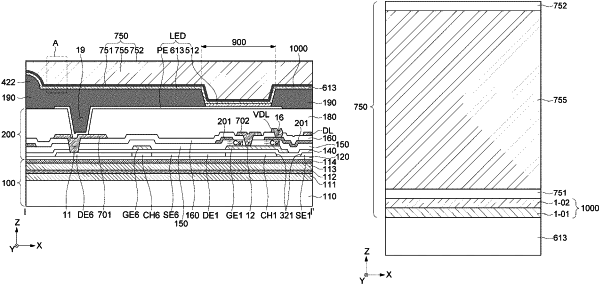| CPC H10K 50/844 (2023.02) [H10K 50/115 (2023.02); H10K 50/841 (2023.02); H10K 50/865 (2023.02); H10K 59/38 (2023.02); H10K 71/00 (2023.02); H10K 2102/00 (2023.02)] | 39 Claims |

|
1. A display device comprising:
a substrate;
a switching element on the substrate;
a pixel electrode disposed on the switching element and connected to the switching element;
a light emitting layer on the pixel electrode;
a common electrode on the light emitting layer; and
a sealing portion on the common electrode, the sealing portion comprising:
an organic layer; and
at least one first composite inorganic layer disposed between the organic layer and the common electrode, the at least one first composite inorganic layer comprising:
a first inorganic layer between the common electrode and the organic layer; and
a second inorganic layer between the first inorganic layer and the organic layer,
wherein
a refractive index of the first inorganic layer and a refractive index of the second inorganic layer are different from each other, and the first inorganic layer and the second inorganic layer contact each other, and
a difference between the refractive index of the first inorganic layer and the refractive index of the second inorganic layer is substantially equal to or more than about 0.4 so that the at least one first composite inorganic layer has a transmittance of 10% of a maximum transmittance or less of ultra-violet light.
|